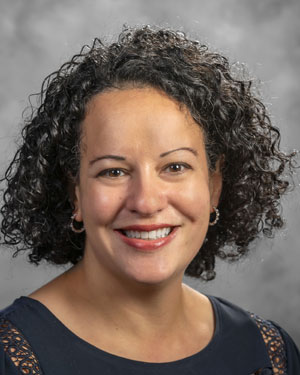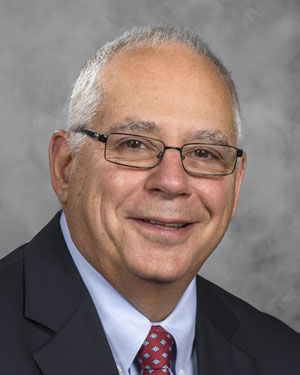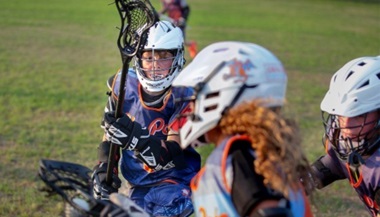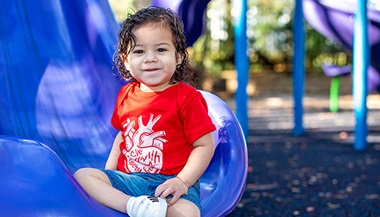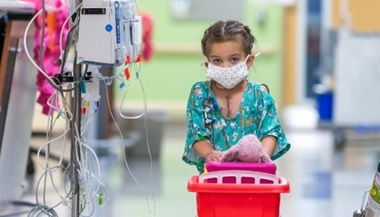Patient Story
Interrupted Aortic Arch: David’s Story
Patient Story Highlights
- David was only a few days old when an undiagnosed heart condition sent him into cardiogenic shock.
- Interrupted aortic arch is a rare type of heart defect that affects fewer than 2% of heart disease patients.
- At Johns Hopkins All Children’s Heart Institute, a team of experts trained in pediatric cardiac critical care medicine saved the infant’s life and set him on a path to recovery.
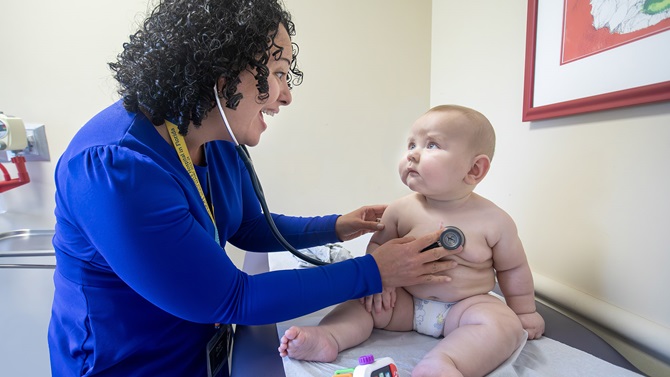
Baby David’s parents are nearing exhaustion.
But the adrenaline of the moment is propelling them forward.
For a seemingly endless number of hours, they’ve been at their infant son’s bedside in the cardiovascular intensive care unit (CVICU) of Johns Hopkins All Children’s Hospital in St. Petersburg, Florida, appealing to their infant as he neared open-heart surgery.
He needs to cooperate. Can you negotiate with someone barely 3 weeks old? Jessica leaves nothing to chance.
“OK, David. Just, please. No funny business,” Jessica says, studying her son’s impossibly tiny hand wrapped around her index finger. “No fevers, no infections, no surprises. I just want to get you well and take you home.”
So far, in this baby’s short life, he has been full of surprises.
Born a day early, on May 12, David was able to go home with his parents, Jessica and David (both father and son are named David) just in time for Mother’s Day weekend. Beyond a mild case of low blood sugar, which was corrected before he went home, David showed all the behaviors of a healthy baby. He was eating and sleeping as he should, and all seemed to be going well.
Days later, when the parents brought their baby to his pediatrician for his first “well baby” visit — things took a dramatic and frightening turn.
‘Zero to 60’
Tuesday morning, May 16.
The family had arrived for the appointment just after 10 a.m. with David seeming fine, but it was turning into a lengthy visit. He was becoming alarmingly lethargic during the visit.
“He started becoming unresponsive, and they noticed his breathing was labored. Everything just escalated, zero to 60,” Jessica says.
Nurses tested the baby’s blood sugar and found it to be dangerously low. They called for emergency transport to Johns Hopkins All Children’s Emergency Center, where the baby was intubated and promptly admitted to the neonatal intensive care unit (NICU).
Baby David was gravely ill.
“They flooded the NICU with every specialty they had,” Jessica says. “I felt like I met 150 people. But they all had a job to do.”
Within 45 minutes, doctors had a diagnosis. An echocardiogram showed David had a rare type of congenital heart disease — specifically, something called interrupted aortic arch (IAA).
“This is where the blood vessel going out from the heart to the body has an interruption in it. It’s not connected,” says Joyce Johnson, M.D., a pediatric cardiologist in the Johns Hopkins All Children’s Heart Institute who treated David in the NICU.
Sometimes, an IAA can be discovered in utero during a 20-week scan. But they’re not always easy to detect.
Normally, when a fetus is in the womb, the baby gets oxygen from the mother’s placenta and a small vessel called the ductus arteriosus provides blood to the body. Shortly after birth, the ductus arteriosus naturally constricts as the baby begins to breathe oxygenated air.
At that point, the aorta, the blood vessel that comes out of the left side of the heart, takes over and provides blood to the body. But because of David’s heart defect, only the upper portion of his body was receiving proper blood supply.
While his brain, heart and lungs were functioning — his kidneys, bladder and pancreas were shutting down. The baby was in cardiogenic shock.
Cardiologists commonly order a prostaglandin medication to re-open the ductus arteriosus to re-establish blood flow until the patient can be stabilized.
But in David’s highly unusual case, the medication didn’t work.
Curveball
It would be the first of many “curveballs” this baby would throw his dedicated care team.
David was moved to the hospital’s CVICU, where a team of experts trained in pediatric cardiac critical care medicine would apply all of their collective skills and knowledge to save this baby’s life.
After exhausting all other options, the heart team prepared for an emergency intervention.
That night, pediatric interventional cardiologist James Thompson, M.D., performed a catheterization procedure on David, placing a stent across the ductus arteriosus to allow blood flow back into the portions of his body that had been deprived of it.
“Dr. Thompson was phenomenal,” Jessica says. “The smile that came across his face when he came out and told me that it had worked … was everything. It made the whole room glow for a minute.”
The family and the team caring for David could breathe a sigh of relief. His journey wasn’t over, but his prospects had dramatically improved.
This would buy them precious time.
Preparing for Heart Surgery
David needed time to get stronger again after his ordeal.
He still had open-heart surgery ahead of him to repair the interrupted aortic arch. But the timing was delicate. If done too soon, there would be a chance his organs would not recover properly.
Over the following days and weeks, Jessica and David maintained a constant vigil at their son’s bedside, supporting both their baby and each other, believing in their hearts he could make it through.
Meanwhile, the pint-sized patient kept clinical staff on their toes.
“A week or so would go by and then something would happen,” Jessica says. “He would spike a fever, or he wasn’t quite where he needed to be or something else would happen. The moment you started to trust, he switched up the game.”
Finally, it was time to fix David’s heart.
On May 31, Chief of Cardiovascular Surgery James Quintessenza, M.D., and his skilled surgical team worked to remove the stent and then carefully connected the ascending aorta to the descending aorta, augmenting with a tiny piece of donor tissue, and closing the ventricular septal defect (VSD) in the heart.
The surgery went smoothly. Now, the patient needed time to heal.
Gradually, the baby began to recover and to gain strength. His doting 8-year-old sister, Charlie, did her part by reading and singing to him, and hanging toys over his crib.
On June 28, the infant who entered Johns Hopkins All Children’s so very close to losing his life left the hospital with his family, healthy and whole.
“David’s case challenged our entire team,” says Quintessenza. “It took the skillset of every individual along the way to create that very high level of care. It’s why we do what we do, to be able to help these children.”
Since David’s hospitalization, follow-up visits with his cardiologist have been stellar.
“David’s story is one of resilience,” says Johnson, his cardiologist. “His repair is beautiful, and he has no residual heart disease. His story is a reminder to all to maintain optimism, even when things seem truly hard.”
When baby David is older, how will his parents tell their son about his own story?
“We will begin by telling him he is a blessing,” Jessica says. “Then we’ll share with him his many beads of courage to show him all that he has overcome. The rest will be up to David.”

